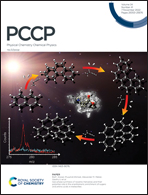Microscopic origin of diffusive dynamics in the context of transition path time distributions for protein folding and unfolding
Abstract
Experimentally measured transition path time distributions are usually analyzed theoretically in terms of a diffusion equation over a free energy barrier. It is though well understood that the free energy profile separating the folded and unfolded states of a protein is characterized as a transition through many stable micro-states which exist between the folded and unfolded states. Why is it then justified to model the transition path dynamics in terms of a diffusion equation, namely the Smoluchowski equation (SE)? In principle, van Kampen has shown that a nearest neighbor Markov chain of thermal jumps between neighboring microstates will lead in a continuum limit to the SE, such that the friction coefficient is proportional to the mean residence time in each micro-state. However, the practical question of how many microstates are needed to justify modeling the transition path dynamics in terms of an SE has not been addressed. This is a central topic of this paper where we compare numerical results for transition paths based on the diffusion equation on the one hand and the nearest neighbor Markov jump model on the other. Comparison of the transition path time distributions shows that one needs at least a few dozen microstates to obtain reasonable agreement between the two approaches. Using the Markov nearest neighbor model one also obtains good agreement with the experimentally measured transition path time distributions for a DNA hairpin and PrP protein. As found previously when using the diffusion equation, the Markov chain model used here also reproduces the experimentally measured long time tail and confirms that the transition path barrier height is ∼3kBT. This study indicates that in the future, when attempting to model experimentally measured transition path time distributions, one should perhaps prefer a nearest neighbor Markov model which is well defined also for rough energy landscapes. Such studies can also shed light on the minimal number of microstates needed to unravel the experimental data.



 Please wait while we load your content...
Please wait while we load your content...